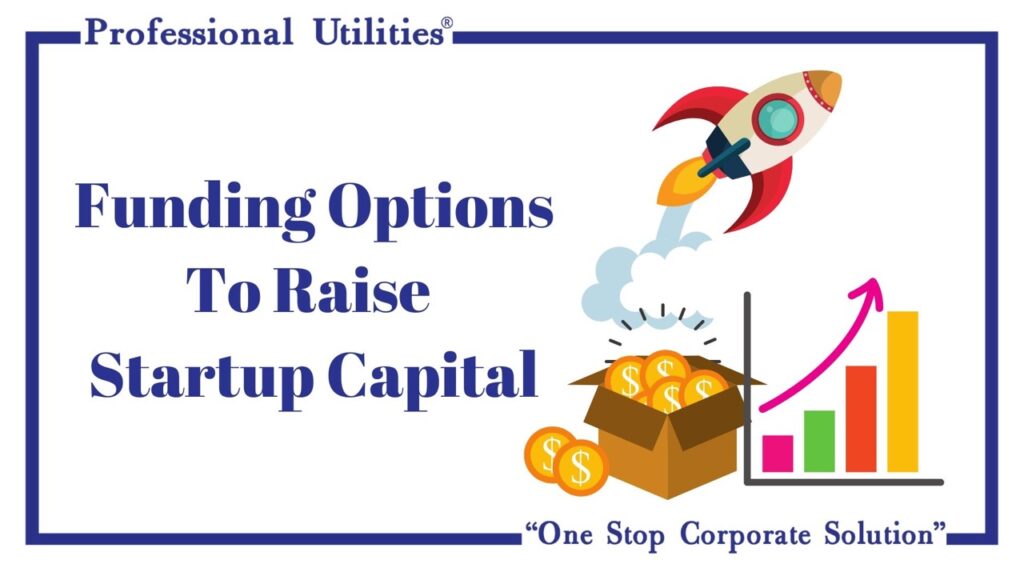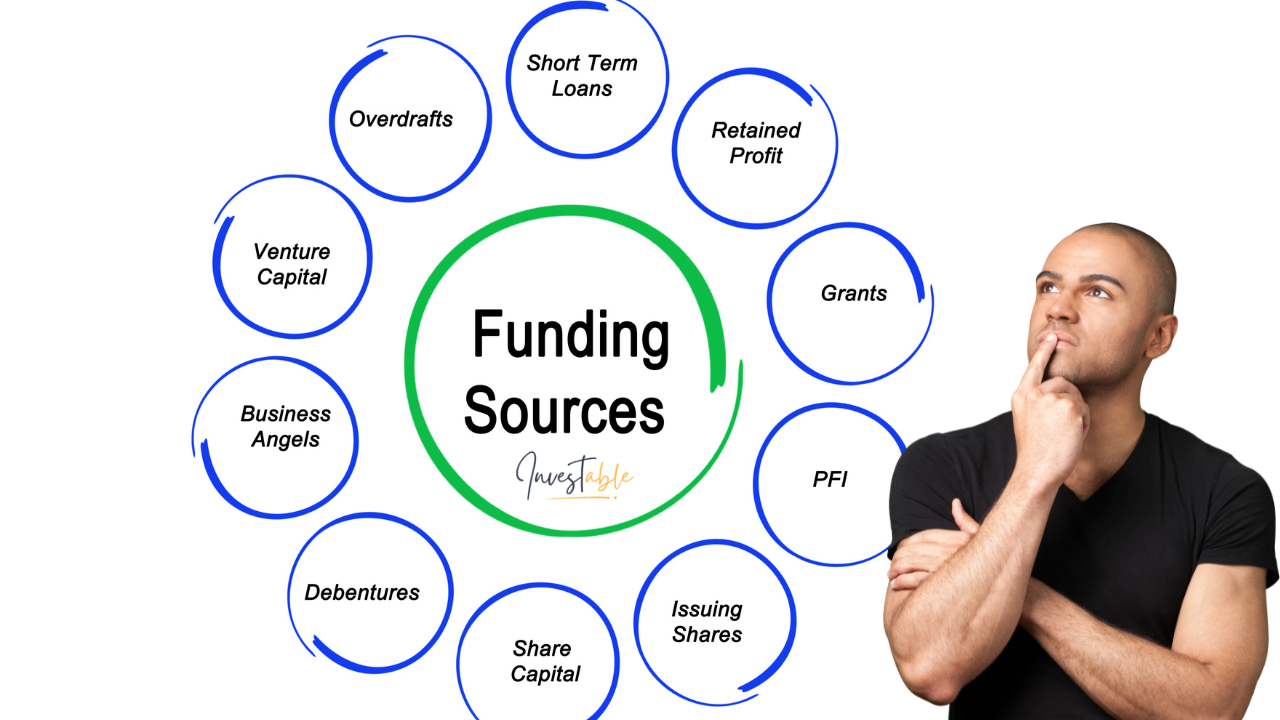Introduction to Business Funding
Starting a business is an exciting journey, but it can also be expensive. To turn your dream into reality, you’ll need funding to cover expenses like equipment, office space, marketing, and staff. So, what are your options? There are numerous ways to fund your business, each with its own benefits and risks. In this article, we’ll explore 14 popular funding options to help you choose the best one for your startup.
1. Personal Savings
Using your personal savings is one of the most common ways to fund a new business. It’s simple—you have complete control, and you don’t owe anyone anything.
Benefits of Using Personal Savings
When you use your own money, you have the freedom to make decisions without external pressure. You also avoid interest payments or having to give away a share of your company.
Risks Involved
On the flip side, using your savings can be risky. If the business doesn’t succeed, you could lose your personal funds, which could impact your financial security.
2. Friends and Family
Another popular option is borrowing money from friends or family members. While it’s common, it requires clear communication and formal agreements to avoid misunderstandings.
How to Approach Friends and Family for Funding
Be honest about your business plans and the risks involved. Create a formal agreement outlining the terms of the loan, including repayment schedules and interest, if applicable.
Pros and Cons of Family Loans
While family loans may come with flexible repayment terms, mixing business and personal relationships can create tension if things don’t go as planned.
3. Angel Investors
Angel investors are wealthy individuals who provide capital in exchange for equity in your company.
What Are Angel Investors?
Angel investors often invest in startups they believe have high growth potential. They can also offer valuable advice and connections.
How to Attract Angel Investors
To attract angel investors, you’ll need a solid business plan, a clear growth strategy, and a compelling pitch that highlights why your business is worth investing in.
4. Venture Capital
Venture capital is another form of equity financing where investors provide large sums of money in exchange for a share of your business.
How Venture Capital Works
Venture capitalists typically invest in companies with high growth potential. In return, they take an active role in your business and may influence its direction.
Advantages and Disadvantages of Venture Capital
Venture capital can provide substantial funding, but you might lose some control over your company as investors may want a say in decision-making.

5. Small Business Loans
Traditional business loans are a reliable funding option. They come in different forms, such as term loans or lines of credit, and can be obtained from banks or online lenders.
Types of Small Business Loans
- Term Loans: A lump sum you repay over a set period.
- Line of Credit: A revolving loan that lets you borrow as needed.
Requirements for Getting a Loan
You’ll typically need a strong credit score, a solid business plan, and collateral to qualify for a small business loan.
Also Read: Top 25 Small Business Ideas In 2025
6. Crowdfunding
Crowdfunding involves raising small amounts of money from a large number of people, typically through online platforms.
What is Crowdfunding?
In crowdfunding, people contribute to your business in exchange for perks, products, or equity. It’s a way to test your product’s market appeal while raising funds.
Popular Crowdfunding Platforms
Some popular platforms include:
- Kickstarter
- Indiegogo
- GoFundMe
7. Government Grants
Governments offer grants to small businesses, especially in sectors like technology, research, and education. These grants don’t need to be repaid.
Types of Government Grants for Startups
- Innovation Grants: For companies working on new technologies.
- R&D Grants: For research and development projects.
How to Apply for a Grant
You’ll need to meet specific criteria and fill out a detailed application to qualify for most grants.
8. Bootstrapping
Bootstrapping means funding your business by reinvesting the profits back into the company, without relying on outside funding.
What is Bootstrapping?
With bootstrapping, you rely on your revenue and careful budgeting to grow your business.
When Bootstrapping is a Good Option
Bootstrapping is ideal if you want to maintain full control of your business, but it requires patience as growth may be slower.
9. Business Incubators and Accelerators
Incubators and accelerators provide funding, mentorship, and resources to startups, helping them grow faster.
Difference Between Incubators and Accelerators
- Incubators: Help startups at very early stages.
- Accelerators: Focus on scaling businesses that already have traction.
How to Join an Incubator or Accelerator Program
Programs are often competitive. You’ll need to demonstrate a unique business idea and a solid growth plan.
10. Peer-to-Peer Lending
Peer-to-peer (P2P) lending allows you to borrow money directly from individuals through online platforms.
Understanding Peer-to-Peer Lending
P2P lending bypasses traditional banks and matches you with individual investors.
Key Platforms for Peer-to-Peer Lending
- LendingClub
- Prosper
- Funding Circle
11. Microloans
Microloans are small loans typically offered to startups or small businesses that need a small amount of capital.
What Are Microloans?
Microloans range from $500 to $50,000 and are usually easier to qualify for than traditional loans.
Best Providers of Microloans
- Accion
- Kiva
12. Equipment Financing
Equipment financing allows you to purchase machinery, technology, or tools by borrowing the amount needed for that equipment.
How Equipment Financing Works
The equipment itself serves as collateral, so if you can’t repay the loan, the lender can repossess it.
Is It the Right Choice for Your Business?
This is a good option if you need specific equipment to run your business but don’t want to dip into your cash reserves.
13. Invoice Factoring
Invoice factoring lets you sell your unpaid invoices to a factoring company in exchange for immediate cash.
What is Invoice Factoring?
A factoring company pays you a percentage of the invoice value upfront, and then collects payment from your customers.
Pros and Cons of Invoice Factoring
While this can improve cash flow, you lose some revenue, as the factoring company takes a fee for its services.
14. Line of Credit
A line of credit gives you flexible access to funds up to a certain limit, allowing you to borrow as much or as little as you need.
How a Business Line of Credit Works
You can draw funds as needed and only pay interest on the amount you borrow.
The Benefits of a Line of Credit for Startups
A line of credit is ideal for managing short-term expenses and fluctuating cash flow.
Conclusion
Choosing the best funding option for your business depends on various factors like the amount you need, your risk tolerance, and how much control you’re willing to give up. From personal savings to venture capital and government grants, each option has its pros and cons. The key is to evaluate your business needs and financial situation carefully before making a decision.
FAQs
1. What is the easiest funding option for startups?
Personal savings and crowdfunding are often considered the easiest, as they don’t require extensive paperwork or approval processes.
2. Can I combine multiple funding options for my business?
Yes, many businesses use a mix of funding sources, like combining a small loan with crowdfunding or an angel investment.
3. How long does it take to secure funding?
The timeline varies. Crowdfunding and personal savings can be immediate, while loans and venture capital might take weeks or months.
4. What are the risks of borrowing from friends and family?
Borrowing from friends and family can strain personal relationships if the business doesn’t succeed or payments are delayed.
5. How can I improve my chances of getting a business loan?
Having a solid business plan, good credit, and collateral will increase your chances of securing a loan.





